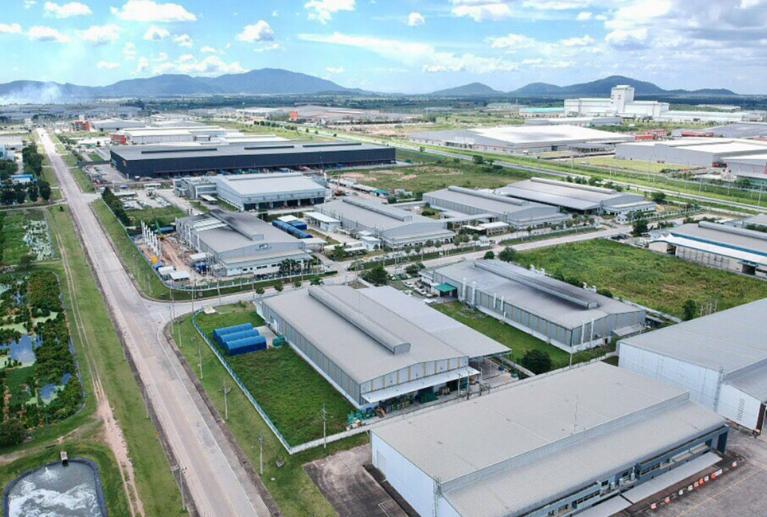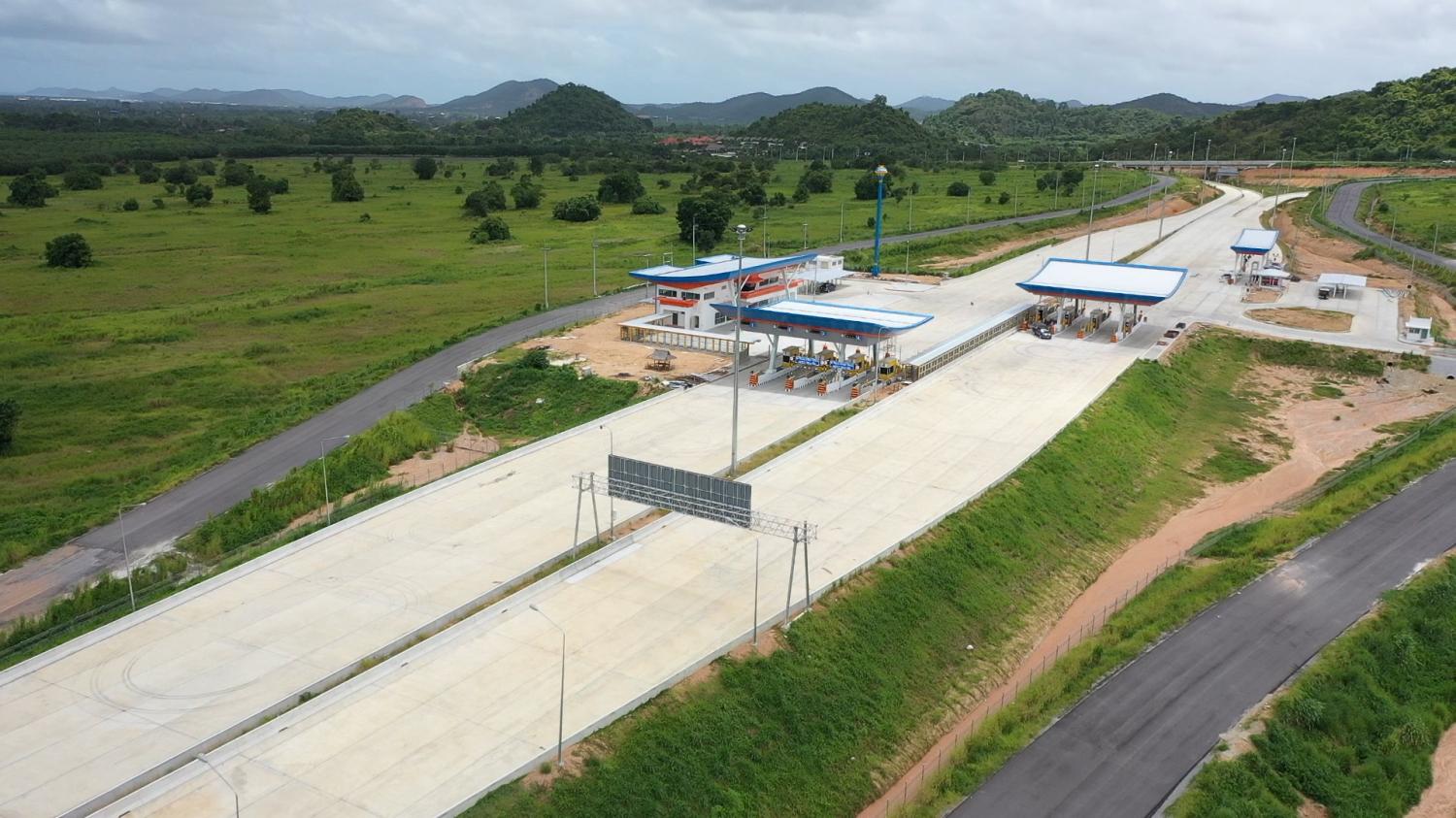
Despite risks from the travel ban, a delay in vaccine distribution and new tensions in US-China trade, the Eastern Economic Corridor (EEC) and e-commerce are expected to continue spurring industrial property growth, in part thanks to stimulus plans and government investment in infrastructure and transport projects.
Phattarachai Taweewong, director of research and communications at Colliers International Thailand, said the industrial estate business in 2021 should improve compared with last year.
Land sales and leases this year will grow by 5-10% on average or 2,500-3,000 rai, driven by the government's investment, said Mr Phattarachai.
"With a development plan started in the EEC area, there will be several industrial estates being prepared for upgrade to a special promotion zone to support targeted industries in the EEC," he said.
In addition to benefits offered from the Board of Investment (BoI), there are additional perks as an investment stimulus, such as higher tax incentives to attract investors and an amendment of regulations to facilitate business operations.
Mr Phattarachai said demand to buy or rent industrial estates is in a recovery trend, driven by infrastructure improvements that can facilitate investment and logistics.
The infrastructure projects include the Chachoengsao-Khlong 19-Kaeng Khoi railway, the Kaeng Khoi-Map Ta Phut and Pattaya-Map Ta Phut motorways, the U-tapao airport commercial development, the development of Laem Chabang Port phase 3, and the Bangkok-Rayong high-speed train.
An expansion of industrial estate areas is in line with the direction of private investment, which will create a positive impact, he said.

Map Ta Phut Industrial Estate in Rayong is part of the EEC. (photo credit : IEAT)
According to Colliers, land sales and leases in industrial estates in the second half last year decreased slightly by 1.52% to 2,150 rai from 2,183 rai in 2019.
Most of the activity remained in the EEC area, with 1,840 rai accounting for 85% of total sales, a rise of 0.29% from the first half of 2020.
Covid-19 did not have an impact on demand overall, as plummeting demand was largely from foreign investors unable to enter the country, said Colliers.
The average occupancy rate of industrial estates stood at 76.2% in the second half of 2020, 0.04% higher than the first half.
"The new round of the pandemic late last year caused concerns among industrial estate developers. Many of them reduced or maintained their prices to retain customers," said Mr Phattarachai.
Bangkok, as a hub of logistics, remained the location with the highest prices, followed by Samut Prakan and Pathum Thani.
However, the EEC area stole the limelight with a significant increase in land prices, reported Colliers.
In other areas, land prices remained relatively lower as the costs of vacant land were lower than those in Greater Bangkok and the EEC area that covers Chon Buri, Rayong and Chachoengsao.
As a result, there was still a lot of land remaining for sale.
According to the BoI, there were 1,098 promotional investment projects in 2020, a slight increase of 1% over 2019.
Total investment value dropped 15% to 224 billion baht. Of this amount, 58% was in targeted industries led by electronics, followed by agriculture and food processing, automotive and parts, and medical.
Colliers forecast this value to exceed 300 billion baht in 2021, accelerated by smart electronics, medical and food industries.

Foreign direct investment in the first nine months of 2020 totalled 657 projects worth a combined 119 billion baht, with Japan topping the chart with 139 projects worth 37.5 billion baht, followed by China with 129 projects worth 21.2 billion and the Netherlands with 62 projects worth 17.5 billion.
The EEC is seen as a magnet, attracting 313 projects worth 109 billion baht. The sum comprises 165 projects worth 46.9 billion baht in Chon Buri, 112 projects worth 48.4 billion in Rayong, and 36 projects worth 14.2 billion in Chachoengsao. Chachoengsao saw the highest growth from 2019 at 4% as it is closer to Bangkok, said Colliers.
"We were approached by a lot of foreign investors who were interested in industrial estates. They were seeking warehouses and factories," said Mr Phattarachai. "Most of them were Chinese, Japanese, European and American."
However, key risks include the new wave of the pandemic prolonging travel bans, a delay in vaccination rollouts, new tension in US-China trade and a strong baht, he said.
Adam Bell, head of industrial and logistics at CBRE Thailand, said the logistics market proved to be one of the least-affected industries during the pandemic as more Thai consumers relied on e-commerce and the digital economy, leading to demand for modern logistics properties (MLP) in Thailand.
Over 400,000 square metres of new MLP supply will come into the market in 2021, the vast majority of which will be in the built-to-suit format, he said.
For supply chains, many China-based manufacturers continued to consider relocating their production bases to Southeast Asia, where the costs are lower.

The artist's rendering of the Don Mueang, Suvarnabhumi and U-Tapao rail link shows the proposed Trat extension image. (Photo credit : Jakkrit Weawkraihong)
Investors have become increasingly interested in buying factories to have more control over their premises, while many developers slowed the speculative development of ready-built factories, said Mr Bell.
According to Colliers, warehouse and factory demand will keep growing this year, even as some businesses are affected by the outbreak.
New supply of 500,000 sq m set to be introduced this year will mostly come from large players, said Colliers. Around 300,000 sq m is in the EEC area, which will be served by the infrastructure projects.
Some industrial estate developers are expanding warehouses and factories on more than 150 rai for a rental space of up to 150,000 sq m on Bang Na-Trat and Theparak roads to support rising demand over the next two years.
At the end of 2020, the largest supply remained in Samut Prakan with 2.69 million sq m or 38% of the total, followed by the EEC area with 2.25 million sq m or 32%.
Nationwide, there is 6.96 million sq m of warehouse and factory supply.
Of the amount, around 6 million sq m is occupied, accounting for 87.5%, up 0.2 percentage points from the first half of 2020.
Samut Prakan recorded the highest occupancy at 91% as the province is linked to manufacturing and logistics hubs, followed by Bangkok at 90.7%.
The EEC area had 78.2%, with rising demand attributed to electronics and pharmaceutical industries.
Despite the pandemic, demand for warehouses and factories remained strong, with around 100,000 sq m signed via deals during the second half of 2020.
There are many more contracts from e-commerce, food and logistics industries, which benefited from the work-from-home trend, said Colliers.

The Khao Shee-ohn ramp, part of the No.7 motorway, leads to Highway No.331 in Sattahip, Chon Buri. (Photo credit : Department of highways)
Last year online shopping in Thailand reached 220 billion baht, accounting for 4-5% of the total retail business and representing 35% growth over 2019.
Average rent remained unchanged at 152 baht per sq m. The highest was in Bangkok at 174 baht, with some areas asking for 200 baht per sq m, followed by the EEC and Samut Prakan at 153 and 152 baht, respectively.
Teerawit Limthongsakul, managing director of Nexus Real Estate Advisory Co, said foreign investors in the industrial sector continue to consider Thailand a preferred choice.
"The pandemic was controlled fairly well, while infrastructure and EEC development plans are underway," he said.
Even though the global recession and regional political issues created some difficulties in decision-making for investors, industrial estate developers still saw opportunities from positive factors and plan to expand their businesses for 3-5 years, said Mr Teerawit.
Around 10% of the existing supply or 20,000 rai in industrial parks should support the opening of high-speed train projects in 2024, he said.

The inventory of serviced land plots stood at almost 200,000 rai with a sales rate of over 90%, while the average land price was 6.1 million baht per rai, up 1.7%.
The pandemic is a catalyst for e-commerce business growth. According to SCB's Economic Intelligence Center, e-commerce sales this year will grow 35%, driving total parcel shipments to over 4 million items per day. This will lead to growth in ready-built warehouses, which have an occupancy rate of 90%, accounting for 3.89 million sq m, said Mr Teerawit.
"The industrial market will see a new trend in absorbing new development pipelines," he said. "Technology has become a big part of our life and the coronavirus means working from home and video conferencing are more accepted."
This disruption led millions to use many cloud services. Rising demand requires a bigger data centre to support and collect data, said Mr Teerawit.